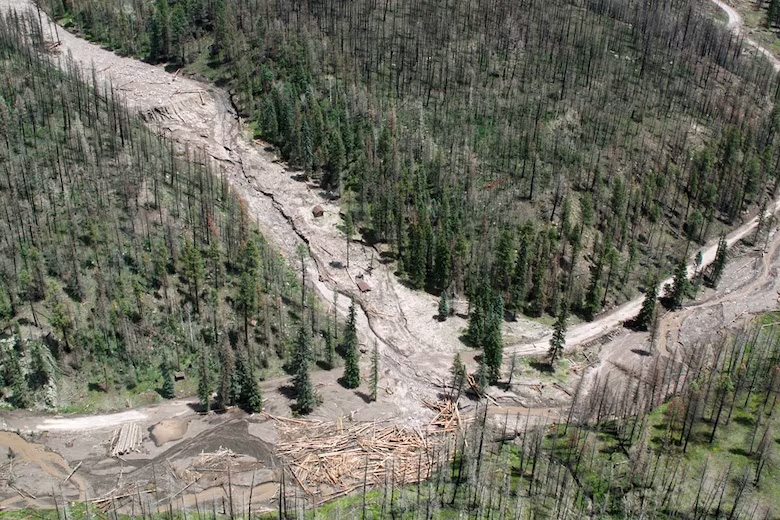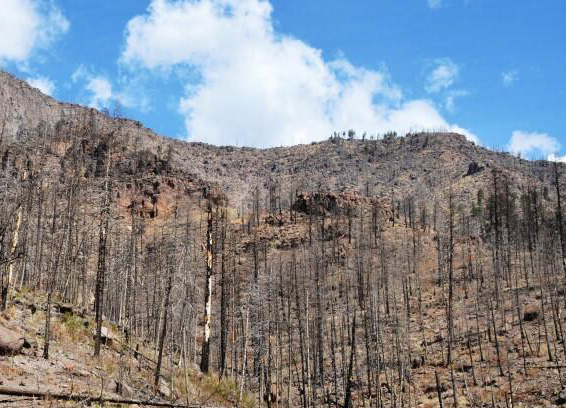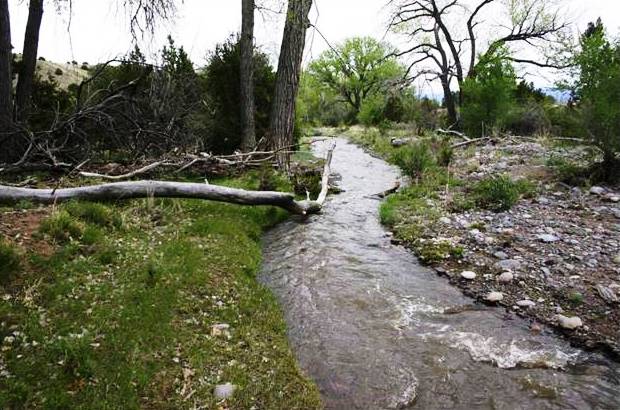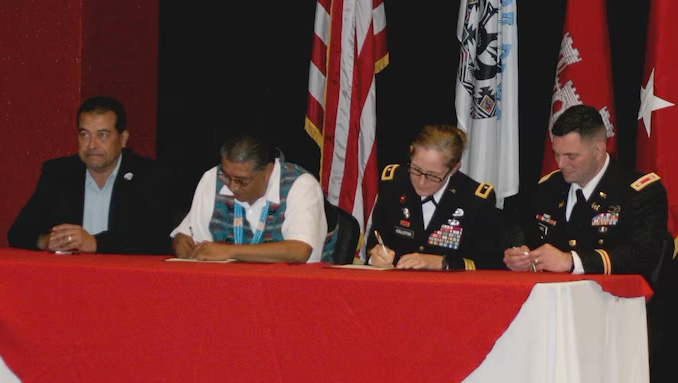The Santa Clara Canyon has been the homeland of the Santa Clara Pueblo Tribe since time immemorial. Today, the pueblo encompasses 90 square miles, situated along the Rio Grande in New Mexico. The Santa Clara Creek forms a 32,000-acre watershed that runs west to east down a steep, 26-mile canyon dropping from 11,000 feet to 5,500 feet of elevation.
The Santa Clara Creek and Canyon is the heart of the life-sustaining ecosystem for its people, and in more recent times had served as a source of public identity and the main economic driver for the Pueblo by providing public fishing, camping, and other recreational opportunities. The Santa Clara Pueblo land has traditionally supported a lifestyle that utilizes resources harmoniously through farming, grazing, hunting, and fishing, with the canyon at the center of the Tribe’s ancient history and culture.
Over the past 20 years, wildfires burned 90% of Santa Clara Pueblo (SCP) forests. The 2011 Las Conchas Fire became the largest fire in state history to devastate the SCP canyon, causing its closure for the past decade. Following the wildfires, the canyon experienced significant erosion and flash flooding from monsoonal rains resulting in debris flows and the closing of the canyon to tribal members and the public. After facing devastating flash flooding events in both July and September of 2013, Governor Chavarria applied and received the first-ever disaster declarations in the region for which a tribal nation was the direct recipient.
Along with public safety and economic preservation, the Tribe sought to restore the sacred areas in the canyon, which were at the core of the Tribe's identity for generations. Placing the restoration of native ecosystems and long-term sustainability at the forefront of a recovery project was an unfamiliar approach to most federal partners. The Tribe prioritized the application of bioengineering principles - the use of living materials (plants, seeds, etc.) to create nature-based solutions - to restore their canyon. However, these techniques had limited applications to reduce the specific hazards in Santa Clara Canyon.
Through an interagency, non-governmental, and intertribal partnerships, and extensive communication and collaboration efforts, the Santa Clara Pueblo was able to access essential resources, funding, and subject matter expertise needed to restore the creek and canyon. Aided by a commitment of federal agencies and other partners to engage the local community and incorporate indigenous knowledge and values into the recovery process, the Santa Clara Pueblo was able to achieve sustainable, long-term results that improved the resiliency of the watershed ahead of future disaster events. Due to the success of these efforts, in September 2021, the Santa Clara Pueblo reopened the canyon to tribal members after a decade of closure, reestablishing a connection to their land, heritage, and livelihood.




Support the people who manage our natural areas and protect biodiversity in perpetuity.